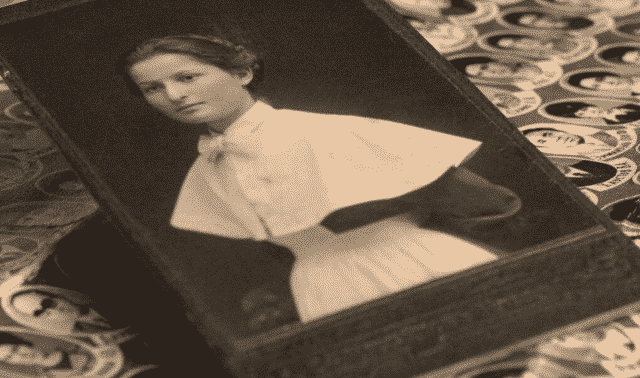
Listed in the 1880 federal census (searchable at www.familysearch.org), there is a William Warren (b. 1874) who lived in Gibson County, Tenn., with his father, William (age 26); mother, Nancy (25); and two sisters, Margaret (4) and Laura (10 months). The census also lists two individuals with the name Dockins, but their relationship to the head of the household is unknown. All members of the household listed Tennessee as their place of birth and their parents’ place of birth. Normally, I would suggest tracing the Warren name back through the generations, but there were so many William Warrens living in Gibson County at that time that it’s difficult to trace just one Warren family.
The image is not a painting, but an ambrotype—often confused with paintings because of the coloring used to enhance facial features or jewelry. Ambrotypes are fragile images because they’re made on glass; hence the crack down the center of this picture. The black backing that the family thought was paint is actually varnish, used to make the negative image appear positive.

The man’s black satin vest and bow tie, worn tucked under the collar, date the picture to the late 1850s. The way he wears his hair—long over his ears—confirms this date. His hair curls up from wearing a hat, a standard part of every man’s daily attire, and his stiff posture might reflect the brace photographers once used to hold subjects still.
The photograph’s date suggests that William John Warren’s grandfather or great-grandfather could be the man in the picture. Assuming a 20-year generation for the family might help to determine who this is: William (b.1874); his father, William (b. 1854, according to the 1880 census); his grandfather (c. 1834); and great-grandfather (c. 1814). The man in the picture is not a young student; he could be in his 30s or 40s. In the late 1850s, William John’s grandfather would have been in his mid-20s, and his great-grandfather in his 40s. Without further documentation, this appears to be a photograph of his great-grandfather, who either attended university at a later age or had his picture taken later, clutching his beloved diploma.
The other question that needs to be answered through documentation is why this Warren attended an English school. There’s a chance that the man in this ambrotype is the family’s immigrant ancestor, which makes this image even more important to the family.
This obviously is a special photograph to the Warren family. Generally, photographs handed down from generation to generation usually have some special significance. In this case, the story of graduation from an English university would be important enough to pass down with photographic evidence. One family member even taped the broken image back into its case, so it could be passed to the next generation.
While it might be difficult, the next step in the identification process is to sort through the generations of Warrens in Gibson County. I’d start with online resources, such as the Tennessee GenWeb, to see what resources exist online or in archives for Gibson County. When researching family in an area I’m unfamiliar with, I usually consult the state-by-state Research Helps on the FamilySearch site. With this new information, it might be possible to find the Warrens’ English connection and confirm the identification of this image.
Find out how to submit your own picture for possible analysis by Maureen Taylor. E-mail her at mtaylor@taylorandstrong.com.



